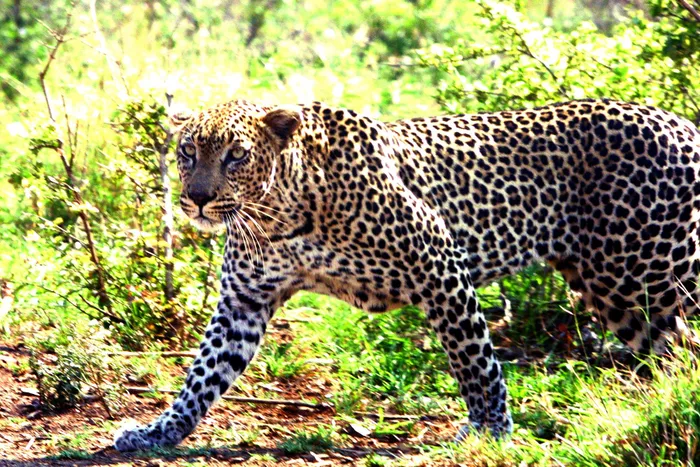Celebrating International Leopard Day: a call to protect South Africa's majestic leopards

A leopard in the Kruger National Park.
Image: Ian Landsberg/Independent Newspapers.
The beauty and majesty of leopards (Panthera pardus) are not just a captivating sight; they also play a crucial role in the ecological balance of their habitats. However, as the world marks International Leopard Day on 3 May, conservationists urged a collective commitment to combat the threats leopards face, including habitat loss, human-wildlife conflict, and poaching.
In South Africa, leopards are classified as vulnerable by the International Union for Conservation of Nature (IUCN), with their population steadily decreasing. Once roaming vast areas, their habitats have been diminished to a mere 25% of their historical range. The alarming decline of these iconic apex predators signals an urgent need for concerted efforts to protect them both in the wild and in captivity.
Four Paws South Africa and Lionsrock Big Cat Sanctuary have joined forces to highlight the significance of safeguarding leopards through their global initiative.
“South Africa can and must set a precedent for global wildlife protection efforts by ensuring that all big cats are safeguarded for future generations,” said Fiona Miles, Director at Four Paws.
“By developing world-class standards and policies, South Africa can lead global advocacy for stricter protections for big cats, shifting the mindset from financial value to the intrinsic value these sentient animals have.”
At Lionsrock, the sanctuary provides a haven for rescued leopards, allowing them to live in environments that cater to their natural behaviours. Among the residents, Bakari, Mike, and Tulani have experienced the tragic realities of captivity. Bakari’s journey to Lionsrock reveals a troubling past; he was initially kept as a photo attraction in a German zoo and later faced distress in confined spaces alongside lions—animals that are natural enemies of leopards. However, with love and care, Bakari has found solace and safety in his new habitat.
Mike and Tulani, known as the sanctuary's “resident couple,” have also overcome powerful adversities. Tulani was raised in a safari farm while Mike was captured in a live trap. Both leopards now thrive in the care of dedicated staff who provide them with enrichment and a peaceful existence. Sanctuary Manager Hildegard Pirker passionately comments, “Leopards are incredibly adaptable and intelligent animals, but their survival is constantly challenged by human activities. We provide them with the space and care they need to live dignified lives.”
As part of their mission, Four Paws advocates for an end to the exploitation and commercial trade of big cats. International Leopard Day represents a vital opportunity to raise awareness about the ethical treatment of wildlife. It is a call for society as a whole to recognise the significance of legal protections surrounding both wild leopards and those in captivity.
Pivotal to this awareness is understanding the differences between leopards and their counterparts, jaguars, which are often confused. While leopards can be found across Africa and parts of Asia, jaguars inhabit the Americas. Their unique rosette patterns further distinguish them: leopards have smaller, more densely packed spots compared to the larger rosettes with central spots that characterise jaguars. Acknowledging these differences is pertinent in providing specific care for each species and catering to their welfare needs.
As we celebrate International Leopard Day, let us commit to advocating ethical wildlife practices and stricter laws to protect these magnificent creatures. The plight of leopards is a shared responsibility, and through initiatives led by organisations like FOUR PAWS South Africa and sanctuaries like Lionsrock, we can ensure that future generations will share the planet with these extraordinary animals.